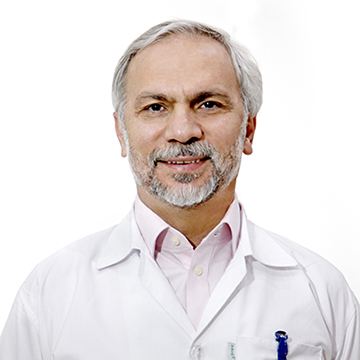Genioplasty or Mentoplasty
The chin is considered one of the most important parts in the beauty of the face, and genioplasty or mentoplasty are chin corrective surgeries that correct defects and make the chin angled.
This surgery has various methods, including bringing the chin forward, retracting the chin, correcting the symmetry of the chin, or lengthening and shortening the chin.
There are different types of genioplasty, which include:
Bone genioplasty or sliding genioplasty
Asymmetric chin genioplasty
Chin implant
This operation is an invasive procedure and requires general anesthesia. Generally, the chin bone is broken in a controlled manner and then stretched forward or backward and fixed with metal screws and plates. Genioplasty is permanent and the bone is attached to its new location. and contrary to what we think, it is not a painful operation at all, but it may cause discomfort, especially for two or three days after the surgery, and the swelling after the surgery may last for two weeks or more.
In this method, you don't need to close the jaws and no incision is made on the patient's skin, and all these incisions are made from inside the mouth and below the roots of the teeth without harming them.
Of course, apart from prostheses and gynoplasty, fat and gel injections are common and low-cost methods for angulation of the chin and jaw.
Care after genioplasty surgery
After surgery, you will be injected with antibiotics to relieve your pain and prevent infection, and the stitches of this surgery are absorbable and do not need to be pulled. It is better to use soft and liquid foods until you recover, and definitely after Wash the area with disinfectant mouthwash every time you eat. After 3-5 days, you can remove the bandage and resume your normal activities. Do not exercise for 10 days after surgery. You may experience swelling, redness, or bruising around the chin area, which will disappear after a few days. See a doctor if you see the following.
Fever of 38 degrees or higher
Bruising, redness, or swelling that does not improve after a week
A bad smell that rises from the surgical site
Green or yellow discharge
Bleeding cannot be stopped with low pressure
What is genioplasty?
But what is genioplasty and what process does it refer to? We mentioned that genioplasty surgery is a cosmetic procedure that is effective for people with small chins. Jaw surgery can have a significant effect on the appearance of people. Note that chin deviation surgery or genioplasty surgery is actually one of the treatments for jaw deformities (according to the type and extent of the deformity).
Other alternative methods of gynoplasty that can be used are fixed orthodontics, movable orthodontics, or invisible orthodontics to move the lower jaw forward compared to the upper jaw. Determining the type of treatment method (gynoplasty or orthodontics) depends on the degree of abnormality. If the deformity is complex, the need for genioplasty or chin surgery will be felt. A person can consult an orthodontic specialist to find out about the appropriate treatment method.
Genioplasty surgery and its types
If a person is worried about the imbalance of his chin, its position, shape or center, chin deviation surgery is a suitable option. Chin surgery and changing its shape is done by using chin implants or by changing the position of the bone that supports the chin. Genioplasty surgery has different types as follows:
1. Sliding gynoplasty operation
Sliding genioplasty is one of the most common types of genioplasty surgery and chin deviation surgery. Sliding or bony genioplasty is a type of chin and jaw surgery that is performed to move the jaw forward or backward. In sliding genioplasty surgery, the jawbone is moved backward (to reduce the jaw) or forward (to enlarge the jaw) according to the type of abnormality. In some cases, the same genioplasty surgery can be used to shorten or lengthen the length of the face in the up and down direction.
2. Asymmetric chin genioplasty surgery
Asymmetrical chin is one of the abnormalities that may occur due to jaw and dental growth disorders. For this purpose, a person should refer to a specialist who can carefully deal with the details of the jaw and perform chin deviation surgery. The expert's skill in chin deviation surgery and asymmetric chin genioplasty surgery makes him, in addition to perfectly performing the chin deviation surgery and fixing the appearance problems, able to diagnose the jaw and teeth problems that caused the asymmetrical chin.
3. Chin surgery and chin implants
There are different types of implants and they are made of different materials (including silicone). Silicone implants used in genioplasty surgery have tested materials and have not caused problems in any disease. Surgeons often use chin implants in gynoplasty to make the face more balanced. For chin surgery and silicone implants, the surgeon first cuts the inside of the lower lip or under the chin. Then he replaces the chin bone, or uses a chin implant and places it through the incision.


